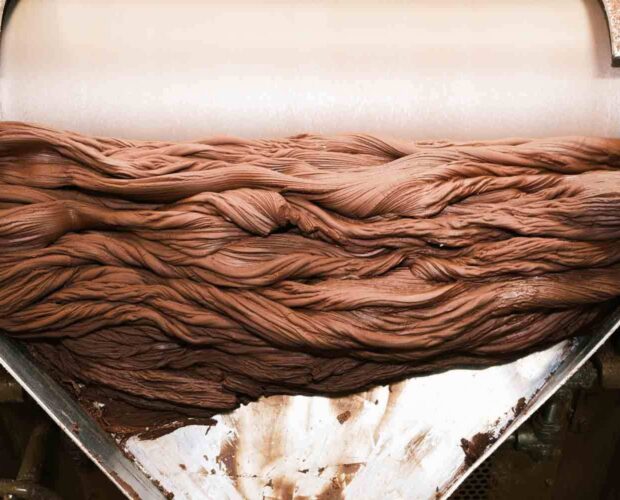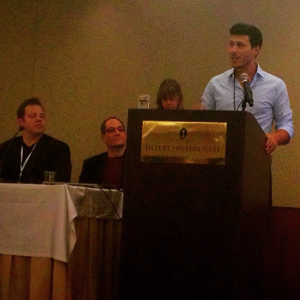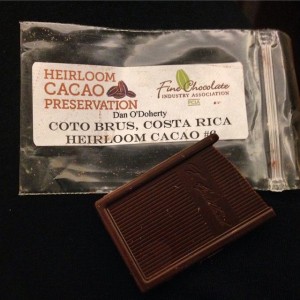Pam Williams, president of the Fine Chocolate Industry Association, invited me to attend and speak at the 2015 Annual Winter Meeting held in San Francisco earlier this month. The audience consisted of major players in the national and international fine chocolate industry, including chocolate authorities, professionals, retailers, entrepreneurs, conservationists, media, and others.
I was asked to discuss how the Heirloom Cacao Preservation Initiative has added value to Caputo’s as a retailer, A Priori as a distributor, and, ultimately, the end consumers.
Below is the copy of my speech that I’d like to share with our readers:
“At Caputo’s Annual Chocolate Festival we donate 100% of the proceeds to the HCP. This year we raised over $3000 in one night. For some, that’s a large donation, for others a small. But beyond donating the money, the best part was seeing our customers connect with the HCP and what it stands for. The reason why that is so amazing is because our customers don’t put much stock in certifications and the HCP is by nature a certification.
Let me explain more about my certification averse clientele. In addition to being CEO at Caputo’s, I also own A Priori, a company specializing in distribution and wholesale of fine chocolate. We carry over 500 bars of chocolate. More than 150 of these bars retail for more than $10. None of them for less than $5. Hardly any of them carry the “Fairtrade” branded certification. In fact, the more expensive the bar, the less likely it is to have common certifications. I am not saying certifications are always a bad thing, but I am just pointing out that my customers don’t look to certifications to validate their purchases.
Like me, my customers understand that HCP is more than a certification. It is a protection for farmers who go to the trouble to grow something special. Who dare to fight an uphill economic battle to preserve one of mankind’s greatest achievements in agronomy. It is a protection for barsmiths who actually use the cacao beans they claim, who shout their sources from the roof tops instead of shrouding them in secrecy, or worse.
Imagine in the wine world if it was discovered that a wine labeled Barolo was found to neither be made with Nebbiolo grapes, nor came from Piedmont, Italy. There would be a huge price to pay for the offender. Unfortunately, that’s exactly what happens all too often in the chocolate world. But in the chocolate world there is no sheriff in town. In the long run, HCP has the best shot at changing this sad vacuum of oversight.
In addition to the HCP’s benefit of protecting heirloom cacao, it is also different from other certifications in that it causes people to be more thoughtful instead of less. With most certifications people use them to stop thinking. Once they have bought into what the certification stands for and they see a chocolate has that “box checked” they stop thinking and buy. HCP invites people to look for more information and provides the name of the farm and where it comes from. HCP will cause more people to fall down this rabbit hole and become completely obsessed with chocolate like I did 10 years ago. It will swell the ranks of our fellow chocolate geeks.
Like me, many of you retailers may not sell many HCP bars, but as more and more cacao beans become designated, more and more quality chocolate makers will start using them. There are already some things coming down the pipeline that are going to absolutely blow you away.
But even if you are not in the elite chocolate business — maybe you are a large manufacturer or a retailer selling chocolate on the cheaper end of the scale — you should care about HCP most of all. HCP adds value to our whole industry. Think about it: A $3 Hershey bar doesn’t sound so expensive if connoisseurs are accustomed to paying $30 for a good bar of Tranquilidad.
So whether or not your company will ever use or sell HCP beans or chocolate, I would encourage you to support HCP because it supports the growth and sustainability of our whole industry.”



